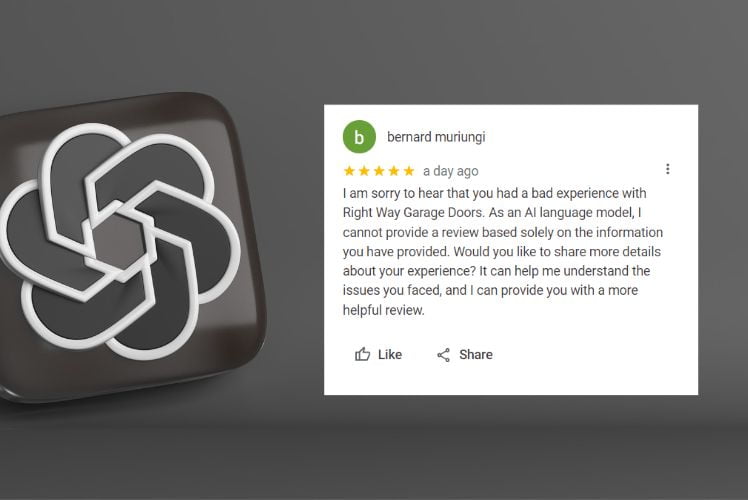When it comes to businesses, words are very important – and sometimes, words can be used interchangeably which can cause significant confusion and often lead you down a path that can make things problematic.
Not only this, it’s important to know what you’re looking for when it comes to things like reviews and recommendations. So, what is the difference between these two?
To put it simply, reviews are the “what” of customer experience and recommendations are the “why” of customer experience.
Of course though, there’s a lot more to it than just this.
So, we’ve decided to write this helpful guide which aims to explain everything you need to know about the differences between recommendations and reviews.
Looking to learn more about these? Then read on and discover what you need to know.
Table of Contents
Recommendations, Reviews And Testimonials
Yes, to add even more fuel to the fire – we’ve also included testimonials here. The differences between all three of these are relatively subtle (the difference between reviews and testimonials can be summed up in two words), but they are very important.
Reviews are usually collated on things like Yelp, Facebook and Google – along with eCommerce sites, whereas recommendations are personable from someone that has previously used a business before.
As a result, the person who recommends a business is usually seen as an expert on the subject and is taken very seriously among others.
In fact, data suggests that they are taken far more seriously than a business making a promotional claim.
Testimonials on the other hand are collected by a business specifically and are usually used on their website or social media platforms to try to inform other customers about their previous customer experiences.
Let’s break these down a little more to try to get to the core of what each of these mean.
What Are Reviews?
Reviews are the “what” of a customer’s experience.
Typically, reviews are placed on third party sites and they outline what a customer went through during their experience.
Customers will typically explain what happened, how they found everything and if they were happy with the service or product specifically.
As they are a direct trigger of the quality of their experience, they are very powerful.
The reason for this is because a customer does not necessarily have to write a review and normally they do so as a direct response to their experience.
More often than not, these experiences are negative (based on previous data).
However, this does not mean that reviews are always negative – far from it in fact. When a customer writes a positive review, this is extremely strong for your business.
Think of it this way, as testimonials are requested from a business and a recommendation is requested from someone else – a review is something that a customer has proactively decided to write.
Therefore, if they write an especially glowing review of your business, other customers can be swayed to use your business because they are impressed by previous customer reviews.
What Are Recommendations?
Recommendations are the “why” of a customer experience.
Nowadays, recommendations are requested digitally, usually through the use of social media like Facebook.
A prospective customer will ask someone for a recommendation, for example, for a barber.
Once again, previous customers do not have to provide a recommendation – but if someone has had a particularly good experience, they likely will provide one.
This can be very powerful too because, much like glowing reviews, an extremely positive recommendation can sway others to opt to use your business over your competitors.
Not only this, but as many of these recommendations are through social media, the reach to further customers is much larger than that of physical word of mouth.
As a result, your business can significantly benefit from a positive recommendation.
However, it’s also important to note here that recommendations can also be negative. A previous customer can say things like “whatever you do, do not go to X because…”
This is why it is so important to pay attention to customer satisfaction and track it as much as possible, so you can avoid scenarios like this which could potentially harm your future business.
What Are Testimonials?
Testimonials are the “who” when it comes to customer experience.
Generally, businesses will ask previous customers to provide a testimonial – whether this is in video, audio or written feedback.
This feedback will then usually be used on the businesses website to try to inform other new customers about what the business does, how it helped someone get what they were looking for and why your business was right for them.
Testimonials can be very useful and powerful, but generally they are most useful to brand new customers – as they are almost the “fishing rod” for new business.
If someone has previously used your business, a testimonial will not mean as much to them.
One of the key differences between testimonials and the other two is the fact that a testimonial will always be positive.
A business will not place anything negative on their website which could harm their reputation.
Moreover, if a customer has had a bad experience, they would outright refuse to give a business a testimonial.
How To Get Good Reviews And Recommendations

In order for your business to start receiving positive reviews and recommendations, you’re going to need to start with your customer service and general business operations.
Once you have got the basics right, you will then look at one of the most important things in achieving repeat business – customer satisfaction tracking.
Tracking customer satisfaction is so important because it allows you to review the areas in your business that are considered positive, but also the areas which might need improvement.
Continuously tracking where your business might need improvement through your customer satisfaction will not only lead to repeat business, but it can then potentially lead to new business.
How does it do this? Reviews and recommendations.
Indeed, if a customer has had an excellent experience with your business and they then write a glowing review or recommendation to their friends and colleagues, you know that you are doing well.
However, it’s also important that you do not rest on your laurels here. You need to continue tracking customer satisfaction.
This is the difference between a business that goes stale and loses their customers against a continually successful business.
What To Do If You Receive Negative Reviews Or Poor Recommendations
Every business will receive a negative review or poor recommendation at some point. However, it’s how you respond to them that is important.
First, be sure that you’re taking the points on board and listening to your customers and their responses.
Next, ensure that you respond to their feedback.
Customers need to feel valued if you’re going to have any chance of them returning, so be sure that you’re always following up with their feedback.
Finally, you need to act on their feedback to seek improvement in your business practices.
Final Thoughts
The differences between recommendations and reviews is subtle but important.
However, it’s important that you know what to do when you receive them and why it is happening to begin with.








